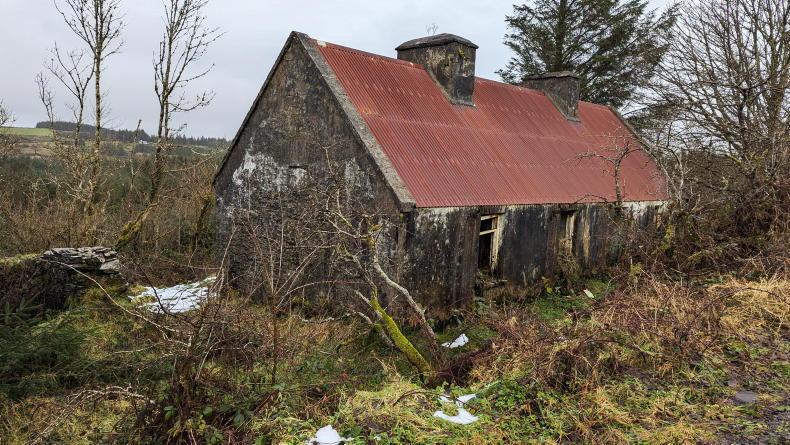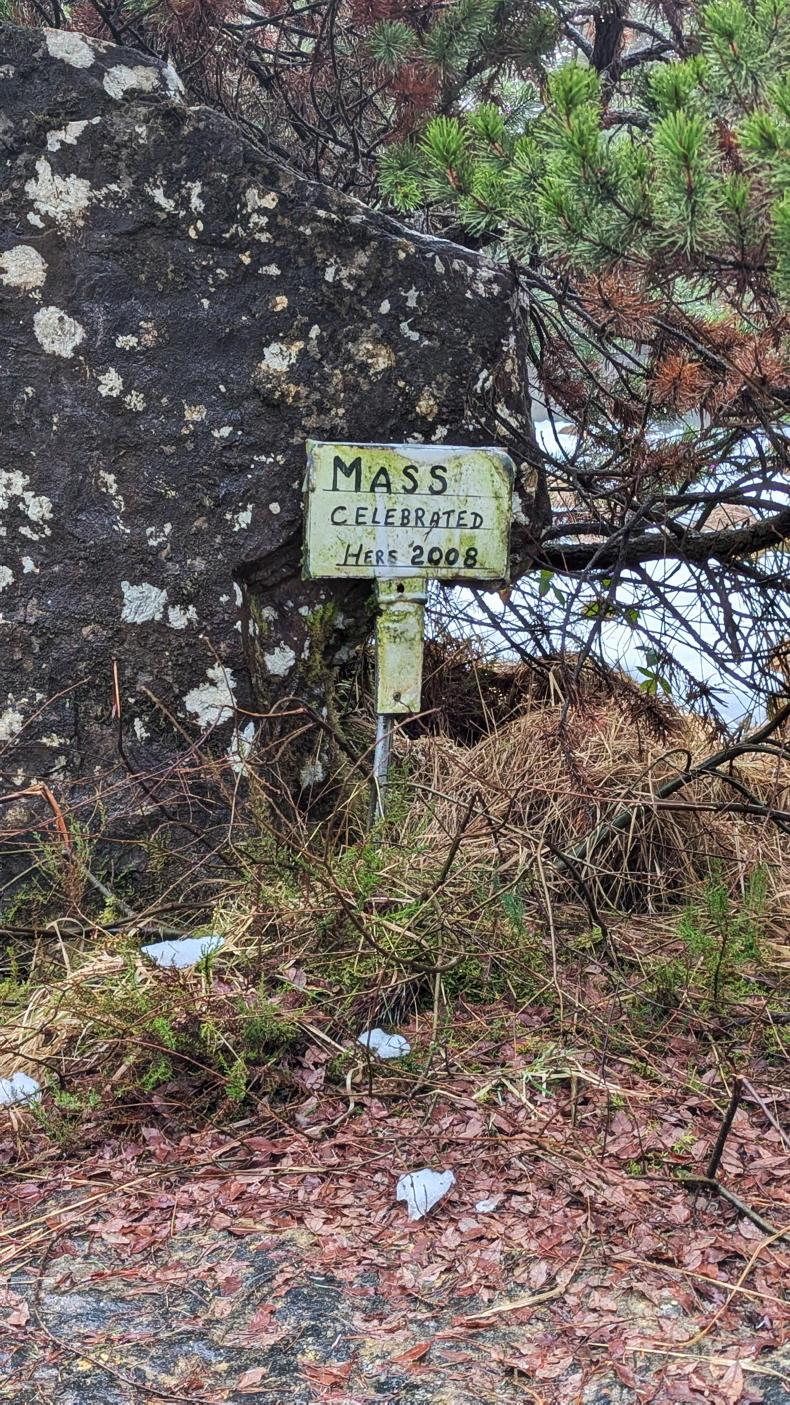When I find the time, I love nothing more than setting off in search of old pockets of native woodland. In recent years, local ecologist Donncha Ó Catháin and I have identified around 60 small woodlands here in west Clare – none of them listed on any official inventories. A few weeks back, while examining aerial photographs, I saw what appeared to be a patch of wet woodland on the edge of a lake in the peaty uplands between Creegh, Kilmihil, and Kilmaley. Curious, I set off to explore.
When I find the time, I love nothing more than setting off in search of old pockets of native woodland. In recent years, local ecologist Donncha Ó Catháin and I have identified around 60 small woodlands here in west Clare – none of them listed on any official inventories.
A few weeks back, while examining aerial photographs, I saw what appeared to be a patch of wet woodland on the edge of a lake in the peaty uplands between Creegh, Kilmihil, and Kilmaley. Curious, I set off to explore.

Maps and satellites of Salabuaile.
As is so often the case, the small woodland was surrounded by hundreds of acres of plantation forestry, mainly sitka spruce. I parked at the top of a logging road and began my journey on foot, the dog in tow. Navigating these landscapes can be tricky.

Only one family name, Boland, appeared in the 1901 and 1911 census for Salabuaile.
Dense conifers give way to deep drains, while the unplanted areas outside the forest have reverted to a wild state, thick with briars, low scrub, and sodden peat.
Peering through the spruce, my eye caught the gable end of an old stone building. It was surrounded by smaller outbuildings. As I scrambled up for a closer look, another cottage emerged from the undergrowth, then another, each within 100m of the last.
I had found an abandoned ‘clochán’, a cluster of homes typical of rural Ireland from medieval times until the early 20th century. The buildings were long derelict, their roofs collapsed, allowing light to spill inside. Willow, whitethorn, and elder had taken root in the ruins. Mosses, lichens, and ferns festooned the surfaces of walls, trees and buildings.
The remnants of traditional Irish life lay scattered about – an old wrought-iron bed, the metal bar of a fireplace crane, rusted pots and pans. For an hour or more, I wandered in silence, absorbing the poignancy of the place.
The story of Salabuaile
I was absolutely intrigued. As soon as I got home I jumped on to Logainm.ie. It’s a great resource for Irish placenames. The name of the clochán, and the broader townland, was ‘Salabuaile’, meaning muddy pasture or milking place, an early hint of its long-standing human connection.

An interior shot at Salabuaile.
Next, I turned to the 1901 and 1911 census. To my surprise, just one family name appeared in Salabuaile, Boland. At the time of the 1901 census, the three cottages were inhabited by three brothers, Patrick, John, and Thomas, along with their families, including other siblings, as well as parents.

The 1901 census shows the three cottages were inhabited by three brothers.
Together, they formed a small but self-sufficient community of about 30 people. The Bolands were farmers and cattle dealers, and according to Griffith’s Valuation, they worked 258ac. The older members of the household spoke both Irish and English, while the younger generation spoke only English.
The Bolands almost certainly farmed under what’s known as the ‘rundale system’, a remnant of Gaelic communal landholding traditions that persisted in rural Ireland for centuries.

The Boland descendants spread far and wide, according to American genealogy websites.
Under rundale, land was divided into scattered, non-contiguous strips, ensuring that each family had access to both good- and poor-quality soil. The clochán was structured as a co-operative settlement, with families sharing responsibilities – ploughing, sowing, and harvesting together. Grazing land was held in common, and booleying (seasonal cattle migration to upland pastures) was an essential aspect of survival. This system, though practical in a subsistence economy, had its flaws. Land fragmentation made crop rotation difficult, and disputes were common. As the population grew in the 19th century, the division of land into ever-smaller plots made survival increasingly precarious.
Echoes of the past
The more I researched Salabuaile, the more I found. American genealogy sites revealed that Boland descendants had spread far and wide. I found intriguing references in Dochas.ie, a treasure trove of Irish folklore and history. One tale spoke of a metal chalice, supposedly found by the Bolands and later stolen by a hedge schoolmaster, who “sold it to the Protestants”.

One genealogy website told the tale of a metal chalice that was found by the Bolands.
According to local lore, the so-called Kilmaley Chalice resurfaced decades later, in the 1930s, in the Ennis Protestant church.
Like many rural families of the pre-technology era, the Bolands had a rich musical heritage.
Clocháns such as Salabuaile were once hubs of traditional music, attracting collectors who sought to preserve disappearing melodies. But much of this cultural wealth was lost in the aftermath of An Gorta Mór (Great Famine).

Beyond the ruins, an old mass rock lay hidden among the hills.
The folklorist Eugene O’Curry lamented the ‘silence’ that followed the famine, as the land of song fell quiet. It is worth remembering that the Boland brothers were almost certainly born to famine survivors.
I purchased some of the land title records for Salabuaile. They made for disheartening reading. Today, this once-storied townland exists only as a few ledger entries on an investor’s spreadsheet, its land changing hands between financial investment vehicles and timber companies, including Coillte, the State forestry company.
The last known resident of Salabuaile was Mikey Boland, John’s son, who lived here without electricity or running water until his death in 1975. By then, Salabuaile stood empty, a relic of an agricultural past swept away by modernisation. Its people had dispersed across the world. Anne Boland, likely a sister of the brothers, died in Brisbane in 1916, while Annie Boland, likely a granddaughter, passed away in Harold’s Cross, Dublin, in 1974.
Higher up, beyond the ruins, an old mass rock lay hidden among the hills. These same hills once echoed with the cries of the hen harrier, a bird that nested in the tall heather. Like the Bolands, they too are gone.
I never did reach the woodland by the lake. Maybe next time.
Ray Ó Foghlú is an environmental scientist and woodland conservationist He is the farm programmes co-ordinator with the Hometree charity.





SHARING OPTIONS: